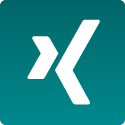Ads on the Internet will bring users directly to your website—and improve targeting of future customers.
Online advertising is a booming market. In 2018 in the United States, the sector generated revenue of nearly USD 107.5 billion, up 22% on the previous year, according to the Global Entertainment & Media Outlook 2019‑2023 report prepared by PwC (next publication: 2018). Online advertising offers definite advantages: costs are lower than for traditional advertising and circulation is easier. In addition, if an ad attracts users' interest, they can go directly to the SME’s website in just one click. This type of ad does, however, run a risk: users do not generally like being bothered by online ads.
Effective advertising banners
Banners are square or rectangular electronic ads around the edges of a website. When users click on the banner, they are taken directly to the company’s website. An effective advertising banner includes the following:
- A quality design. The ad should attract the user's eye.
- Targeted positioning. The ad's location must reach the company’s potential customers. It is pointless to put an ad for video games on a website for a retirement home (though come to think of it...).
- Regular frequency. The best banners are published repeatedly on the same websites.
Pop-ups
Pop-ups are ads that look like banners. They appear in the navigation window when the user is surfing certain pages. However, they are one of the least popular types of ad.
Search ads
When a user uses a search engine, the first results that come up are paid ads which match the keywords used in the search. For example, if the user has entered “swimming pool” in the search engine, he or she will see ads for companies specializing in swimming pools in their town. Google AdWords and Microsoft‘s Bing Ads are among the platforms most used to get this type of positioning.
On social networks
Advertising on social networks is effective because it means companies can accurately target individuals according to age, gender, job or interests. The most advantageous tools are:
- Facebook. The leading social network, with over 1.3 billion active users per month.
- YouTube. The ad can be published via Google AdWords.
- LinkedIn. The leading social network for advertising to other companies.
- Twitter. To promote tweets or get topics on Twitter’s trend lists.
How do companies pay?
Online ads are invoiced at a monthly or annual flat rate. But it is also possible to pay by cost-per-click: the entrepreneur spends a few cents whenever someone clicks on their ad or comes to their website.
Source: Small Business Marketing Kit For Dummies, Barbara Findlay Schenck, John Wiley & Sons Inc, 2012.





